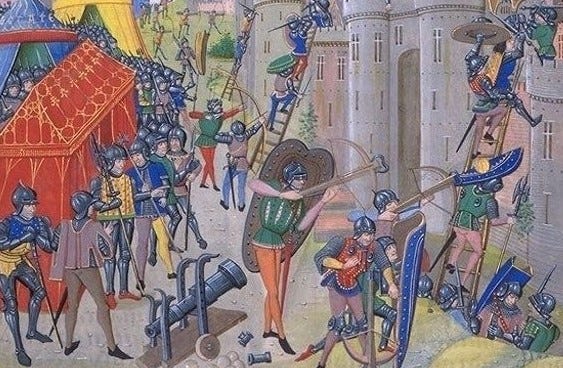Arts of the Siege: Volume I
An annotated link post
Historians are supposed to look for their own niche interest that no one has covered before, or at least not covered in their way. Academics call this sort of opportunity a lacuna. Only after looking through old term papers last fall did I realize that such a lacuna existed on the topic of siege art. Whereas there is plenty of it, and no shortage of it …



